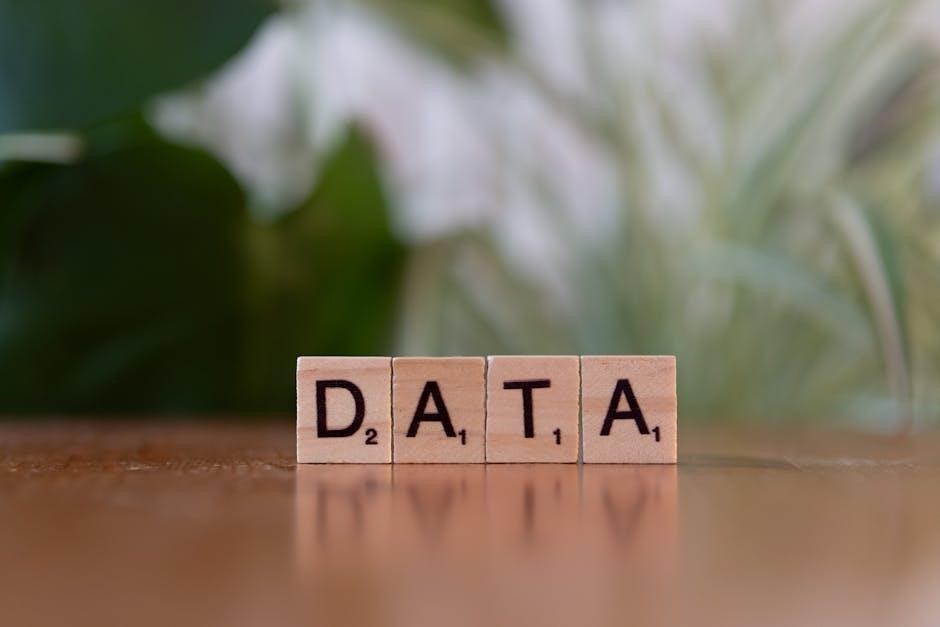
asl alphabet pdf
The American Sign Language (ASL) alphabet is fundamental for communication. This resource provides a gateway to learning ASL‚ starting with the basics. A printable PDF chart is available for easy access and reference. Learning the ASL alphabet is the initial step toward deeper engagement with the Deaf community and its rich culture.

Benefits of Learning the ASL Alphabet
Learning the ASL alphabet offers numerous benefits that extend far beyond simple communication. Firstly‚ it enhances communication skills‚ allowing interactions with the Deaf community. This fosters inclusivity and understanding‚ bridging communication gaps. Additionally‚ mastering the ASL alphabet improves cognitive functions. Studies suggest that learning sign language can boost memory‚ spatial reasoning‚ and problem-solving abilities.
Moreover‚ knowing the ASL alphabet provides a foundation for learning full ASL. Fingerspelling‚ which uses the alphabet to spell out words‚ is an integral part of ASL. It is particularly useful for proper nouns or concepts lacking a specific sign. Furthermore‚ it opens doors to cultural enrichment by exposing learners to Deaf culture‚ history‚ and perspectives. This promotes cultural sensitivity and appreciation.
Learning the ASL alphabet can also be a valuable asset in various professional fields. Educators‚ healthcare providers‚ and social workers who know ASL can better serve Deaf individuals‚ improving accessibility and ensuring effective communication. In emergency situations‚ ASL knowledge can be critical for conveying information and providing assistance. The ASL alphabet is a versatile skill that benefits personal and professional growth.
Finally‚ learning the ASL alphabet fosters a deeper appreciation for linguistic diversity and the beauty of non-verbal communication. It encourages individuals to think beyond spoken language and explore alternative modes of expression. This experience can lead to greater empathy‚ understanding‚ and connection with others.

Free Printable ASL Alphabet Charts
Accessing free printable ASL alphabet charts is a fantastic way to begin your journey into American Sign Language; These charts serve as visual aids‚ displaying each letter of the alphabet along with its corresponding handshape in ASL. The availability of these free resources makes learning accessible to everyone‚ regardless of budget or location. These charts are perfect for individuals‚ families‚ and educators looking to introduce ASL.
These printable charts often come in various designs and formats‚ catering to different learning styles. Some charts may feature colorful illustrations‚ while others offer a more minimalist design. Many resources include additional information‚ such as arrows indicating hand movement or tips for accurate handshapes. The diversity ensures there’s a chart suitable for every learner.
Using these charts is straightforward. Simply download and print the PDF. Display the chart in a visible area‚ such as a classroom‚ home study space‚ or office. Regularly refer to the chart while practicing the handshapes‚ reinforcing your memory and accuracy. Consider laminating the chart for durability‚ especially if it will be used frequently.
These charts are a valuable tool for self-study‚ group learning‚ or classroom instruction. They allow learners to visually connect the English alphabet with the ASL alphabet‚ facilitating memorization. The charts can also be used in interactive activities‚ such as games and quizzes‚ to make learning more engaging and fun. They’re an essential resource for anyone wanting to learn and practice the ASL alphabet.

ASL Alphabet Flashcards for Kids
Introducing ASL to children can be made fun and engaging with ASL alphabet flashcards designed specifically for kids. These flashcards typically feature colorful illustrations and easy-to-understand handshapes‚ making learning the ASL alphabet an enjoyable experience. They are an excellent tool for visual learners and can help children associate each letter with its corresponding sign in a memorable way.
Many free printable ASL alphabet flashcards are available online in PDF format‚ making them easily accessible for parents‚ teachers‚ and caregivers. These flashcards often include both the letter of the alphabet and a clear depiction of the handshape‚ allowing children to learn the connection between written language and sign language. Some sets also incorporate images of objects that begin with each letter‚ further reinforcing learning.
Using flashcards for kids is simple and effective. Start by introducing a few letters at a time‚ showing the flashcard and demonstrating the correct handshape. Encourage children to mimic the sign and repeat the letter. As they become more familiar with the signs‚ you can increase the number of flashcards you use. Games like matching‚ memory‚ and “go fish” can be played to make learning interactive and entertaining.
These flashcards can also be used to teach basic fingerspelling skills‚ which are essential for communicating words not commonly used in ASL. By practicing with the flashcards‚ children can develop their hand-eye coordination and improve their ability to recognize and produce ASL signs. They are a valuable resource for early childhood education and can help children develop an appreciation for language diversity and inclusivity.
Using ASL Alphabet Charts in the Classroom
Integrating ASL alphabet charts into the classroom provides a valuable visual aid for students learning American Sign Language. These charts serve as a constant reminder of the handshapes for each letter‚ promoting consistent practice and reinforcement. They are particularly useful for visual learners who benefit from having a reference point readily available.
ASL alphabet charts can be used in various ways within the classroom setting. One common approach is to display a large‚ colorful chart prominently on the wall‚ allowing students to easily refer to it during lessons and activities. Another method involves providing each student with their own individual chart for personal use. These smaller charts can be kept in notebooks or at their desks for quick reference.
Interactive activities can be designed around the ASL alphabet chart to make learning more engaging. For instance‚ teachers can call out letters and have students sign them‚ or they can spell out words and have students identify them. Games like “Simon Says” can also be adapted to incorporate sign language‚ encouraging students to learn and practice the alphabet in a fun and interactive way.
Furthermore‚ ASL alphabet charts can be used to support students with hearing impairments or those who are learning ASL as a second language. They provide a visual representation of the language‚ making it more accessible and understandable. By incorporating ASL into the classroom‚ teachers can create a more inclusive and diverse learning environment‚ fostering a greater appreciation for different forms of communication.
ASL Alphabet Learning Resources: PDF Downloads
Numerous resources are available online to facilitate learning the ASL alphabet. Among these‚ PDF downloads offer a convenient and accessible way to study and practice. These PDFs come in various formats‚ including printable charts‚ flashcards‚ and worksheets‚ catering to different learning styles.
Printable ASL alphabet charts are a popular choice‚ providing a visual reference for each letter’s handshape. These charts can be displayed in classrooms‚ homes‚ or personal study spaces‚ serving as a constant reminder and aid. Flashcards‚ another valuable resource‚ allow for interactive learning. Each card features a letter and its corresponding sign‚ enabling users to quiz themselves or practice with others. Worksheets offer structured exercises to reinforce understanding. These may include activities like matching letters to signs‚ spelling words using fingerspelling‚ or identifying signs in sentences.
Many websites offer free ASL alphabet PDF downloads. These resources are often created by educators‚ organizations‚ or individuals passionate about promoting sign language accessibility. When selecting a PDF‚ consider the clarity of the images‚ the accuracy of the information‚ and the overall design. A well-designed PDF will be easy to read and visually appealing‚ enhancing the learning experience.
Before downloading‚ ensure the PDF is from a reputable source to avoid inaccuracies. After downloading‚ print the resource or use it digitally on a tablet or computer. Regularly using these PDF resources will significantly improve proficiency in the ASL alphabet‚ paving the way for further exploration of American Sign Language.
ASL Alphabet and Fingerspelling
The ASL alphabet‚ a manual alphabet‚ is the foundation of fingerspelling‚ a crucial aspect of American Sign Language. Each letter of the English alphabet is represented by a unique handshape. Fingerspelling involves using these handshapes to spell out words letter by letter. It serves as a bridge when a sign for a particular word is unknown or when specifying proper nouns‚ names‚ or technical terms.
Mastering the ASL alphabet is paramount to effective communication in ASL. It allows individuals to express a broader range of concepts and engage in more nuanced conversations. Fingerspelling complements sign vocabulary‚ filling in gaps and providing clarity. While not every word is fingerspelled‚ proficiency in the alphabet enhances overall fluency.
Learning the ASL alphabet and practicing fingerspelling involves memorizing each letter’s handshape and developing the dexterity to transition smoothly between them. Resources like ASL alphabet PDF charts and flashcards are invaluable tools in this process. Regular practice is key to improving speed and accuracy. Start by spelling simple words and gradually progress to more complex ones.
It’s important to note that fingerspelling is not a replacement for sign language. It is a supplementary tool used in conjunction with signs. Understanding the context and using appropriate signs whenever possible is essential for clear and natural communication. By mastering the ASL alphabet and practicing fingerspelling‚ individuals can significantly enhance their ability to express themselves and connect with the Deaf community.

ASL Alphabet Image Recognition Projects
ASL Alphabet Image Recognition projects leverage the power of machine learning and computer vision to interpret and translate sign language into text or other understandable formats. These projects aim to bridge the communication gap between individuals who use ASL and those who do not. By developing algorithms that can accurately identify ASL signs from images or videos‚ these projects can facilitate real-time translation and improve accessibility.
Many ASL image recognition projects utilize Convolutional Neural Networks (CNNs)‚ a type of deep learning model well-suited for image analysis. These models are trained on large datasets of ASL sign images‚ learning to recognize the unique handshapes‚ movements‚ and facial expressions associated with each letter and sign. The goal is to create a system that can accurately identify ASL signs in various lighting conditions and with different signers.
The applications of ASL image recognition are vast. It can be integrated into mobile apps to provide instant translation for Deaf individuals communicating with hearing individuals. It can also be used in educational settings to help students learn ASL more effectively. Furthermore‚ these projects can contribute to the development of assistive technologies that empower Deaf individuals to interact more seamlessly with the world around them;
Challenges in ASL image recognition include variations in signing styles‚ hand orientation‚ and background clutter. Researchers are constantly working to improve the robustness and accuracy of these systems. The development of high-quality datasets and the exploration of advanced machine learning techniques are crucial for advancing the field of ASL image recognition.